The Evolution of Staircases: From Ancient Stone Steps to 21st Century Floating Staircases
Have you ever wondered what ordinary staircases looked like a few centuries ago? People started constructing buildings higher than one floor thousands of years ago. Undoubtedly, the need for staircases for travelling between floors arose then. In the V.PSTAIRS portfolio, you can discover many modern projects that perfectly combine safety, functionality, and aesthetics. However, what did such constructions look like hundreds and thousands of years ago?
The staircase evolution throughout the history of mankind shows how rapidly technology changes and how this fact affects the construction of such structures. In this article, we would like to share with you the history of the evolution of staircase construction around the world. Read on to find out how staircases have changed from prehistoric times to nowadays!
When Did the First Staircases Appear?
Actually, it’s quite difficult to name one person and the exact date when the first staircase was invented. Moreover, the first staircases are difficult to compare with the options you are used to seeing today. However, experts claim that the first staircases were built back in prehistoric times. For example, think of the famous Chichen Itza building, which was built by the Maya tribe around the year 600. This large building has stone steps that lead to the very top.
As you might have realised by now, stone was the main material used for staircases in prehistoric times. People would hammer out steps on large rocks and stones to get to the top of a mountain. Some scientists claim that the first stairs in the world were built several thousand years ago BC. It sounds impressive, doesn’t it?
Development of Staircases in the Medieval Period
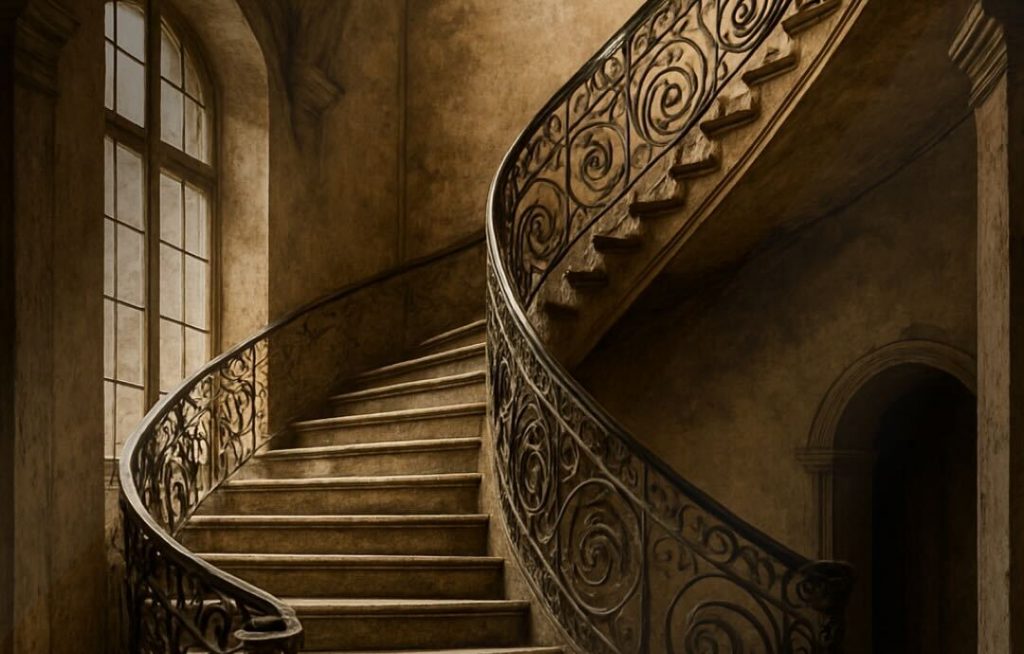
In the Middle Ages, staircases ceased to be purely utilitarian. They began to play an architectural and symbolic role. In castles and cathedrals of Europe, staircases became an expression of status and power. Instead of the rough stone steps of antiquity, spiral staircases appeared, often built into towers, which provided a compact and defensive function. By the Renaissance, staircases became a design element: wide, symmetrical marches in palaces and mansions emphasised the grandeur of the interiors. These are the key components of the staircases of the time:
- Helical shape to save space.
- Balustrades and railings.
- Additions of aisle and landing.
- Use of wooden materials in staircases.
- Additions of decoration.
Thus, staircases in the Middle Ages and Renaissance become not only a means of vertical movement, but also part of the artistic composition of buildings. They are integrated into architecture as expressive elements emphasising the geometry of space and social hierarchy.
Modern 21st Century Staircases
A few decades ago, the staircase construction industry began to change rapidly for the better. Now you have the opportunity to observe unique designs that impress with their appearance. That is why we would like to highlight a few of the main trends in modern staircases of the 21st century.
1. The Floating Staircases
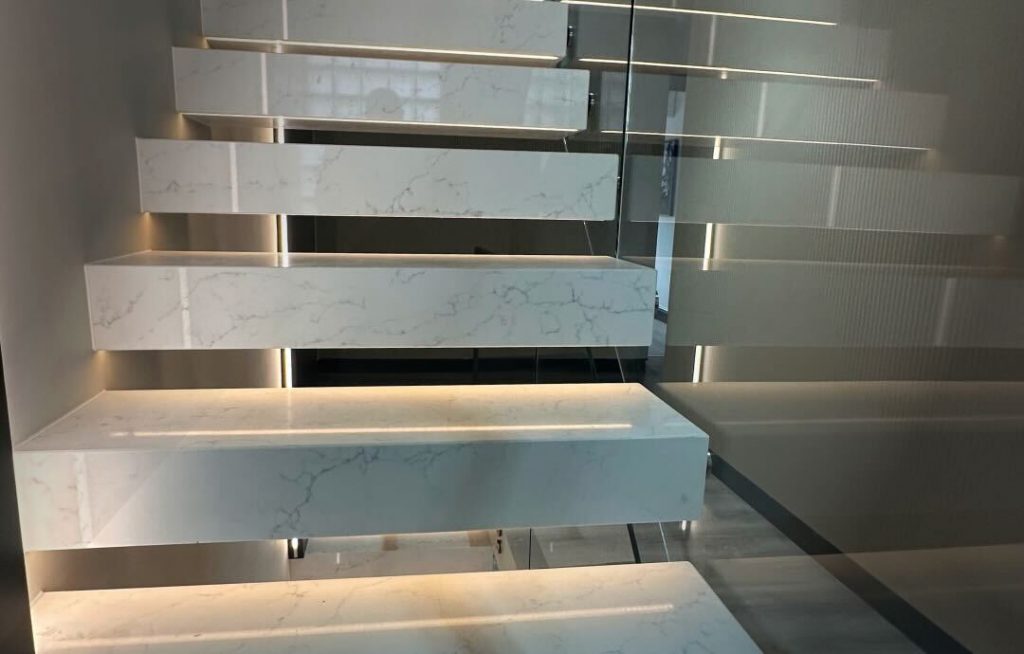
When people talk about modern staircases, the most common thought that comes to mind is floating designs. Why is it so? They look futuristic and as if they are ahead of their time. Their feature is the absence of visible support: the steps seem to fly out of the wall, creating the effect of weightlessness. This design is achieved by concealed fixings inside the wall or a support beam integrated into the structure.
Aesthetically, floating staircases emphasise the purity of lines and openness of space. They fit perfectly into high-tech, Scandinavian minimalist or loft-style interiors. Light-coloured materials are often used: light-coloured wood, concrete, metal. The main advantage is visual lightness and modern appearance, but such staircases require precise calculation, strong materials and professional installation.
2. LED Illumination
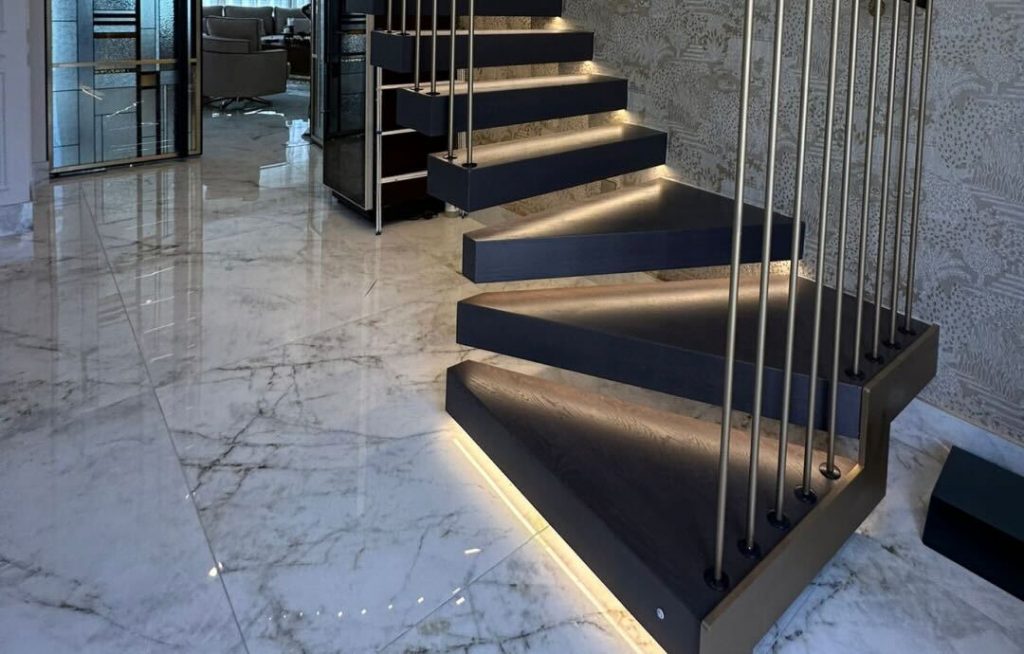
A good staircase should be functional, aesthetic and safe. That’s why an indispensable element of any modern staircase is illumination. Undoubtedly, it gives the staircase expressiveness, improves safety in low light and forms the right atmosphere. Lighting is installed under the edge of the steps, along the perimeter of the handrail or along the wall.
The colour temperature can be varied from warm to cool light, and intelligent systems allow dimming or motion lighting. LEDs are economical, durable, and safe.
Want to know more about staircase lighting? → Explore our article about staircase lighting here
3. Glass Staircases
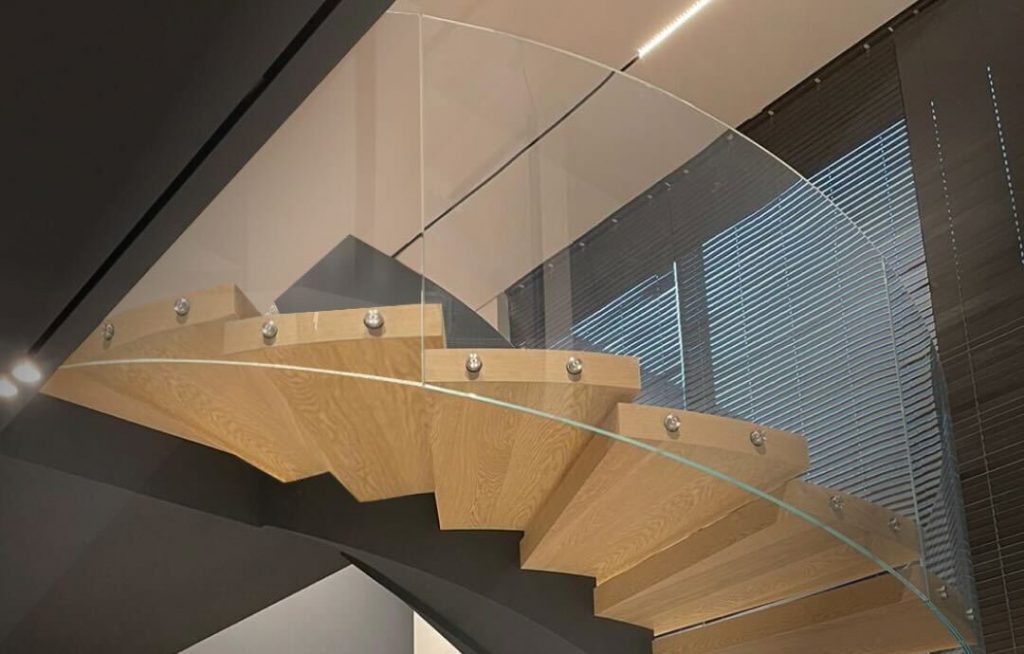
Glass staircases are the choice of bold designers and fans of futuristic style. Is this solution safe? Absolutely, as it uses multi-layer tempered (triplex) glass. It withstands serious loads (more than 200kg) and is safe in case of damage. Such structures are often combined with metal or steel supports, providing strength and lightness at the same time.
Transparency of glass visually expands the space and fills the interior with light. Glass staircases are especially appropriate in houses with panoramic windows and open planning. The surface of the steps can be matt or grooved to increase grip. Modern models are often complemented with backlighting to enhance the floating effect. Despite their high price, glass staircases are becoming increasingly popular due to their technological and prestigious appearance.
4. Combining Different Materials
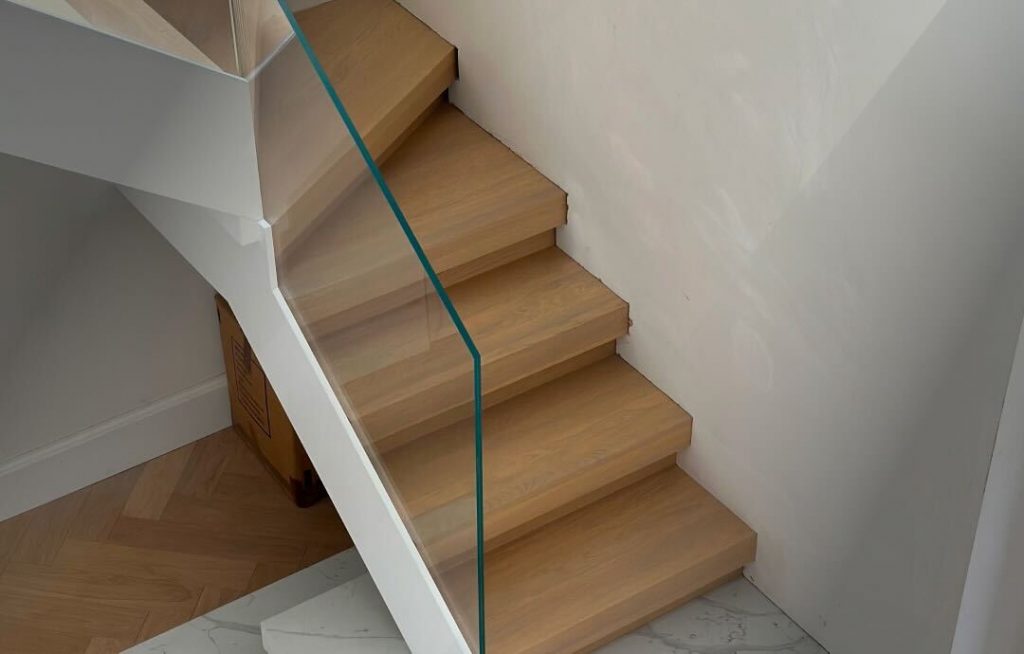
Modern staircase design actively uses combinations of materials, which allows you to create unique images and adapt to different interior styles. They often combine wood and metal, glass and concrete, natural stone and composites. This gives not only visual variety, but also expands functionality.
Combined stairs can emphasise both the brutality of industrial loft and the cosiness of eco-interiors. For example, wooden steps on a metal frame create a warm but modern atmosphere. And glass railings in combination with concrete bases emphasise the strictness and purity of lines.
V.PSTAIRS – The Best Solution for Your Project
Now you know more about how staircase construction has changed over the past centuries. What’s more, current trends are changing every year. If you are planning your next project, you have come to the right place. The V.PSTAIRS team helps with a project of any complexity. That’s why you can think about combining different materials and styles in one design.
There are many reasons to choose professional staircase builders in the UK. Firstly, our company provides services throughout the UK. We take care of all the major processes including design, layout, measurement, material selection, construction, and installation. We guarantee that the end result will fully meet your expectations. Would you like a free consultation? Contact us in any convenient wa,y and our managers will answer all your questions.
1 Comment
Comments are closed.

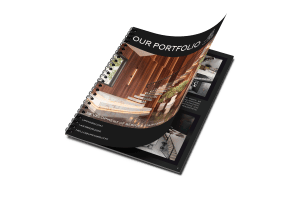
William Ford
When we renovated our flat in Bristol, we went for an oak floating staircase with a matte black stringer. It completely transformed the space. Guests always comment on it. This article made me appreciate that decision even more.